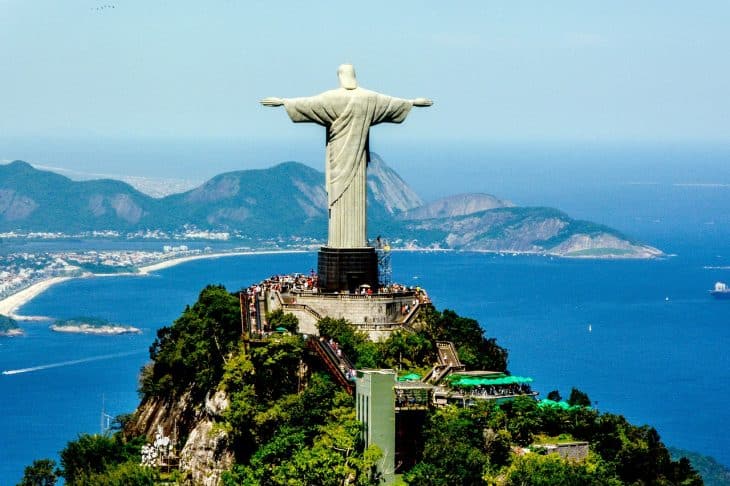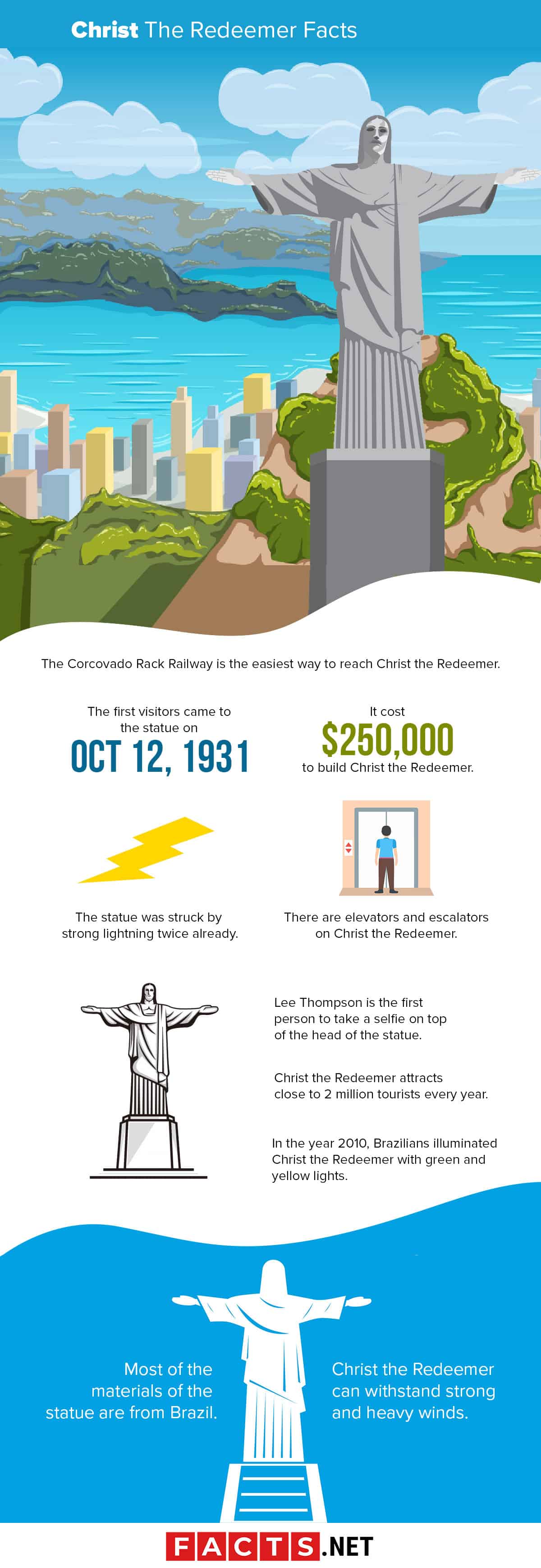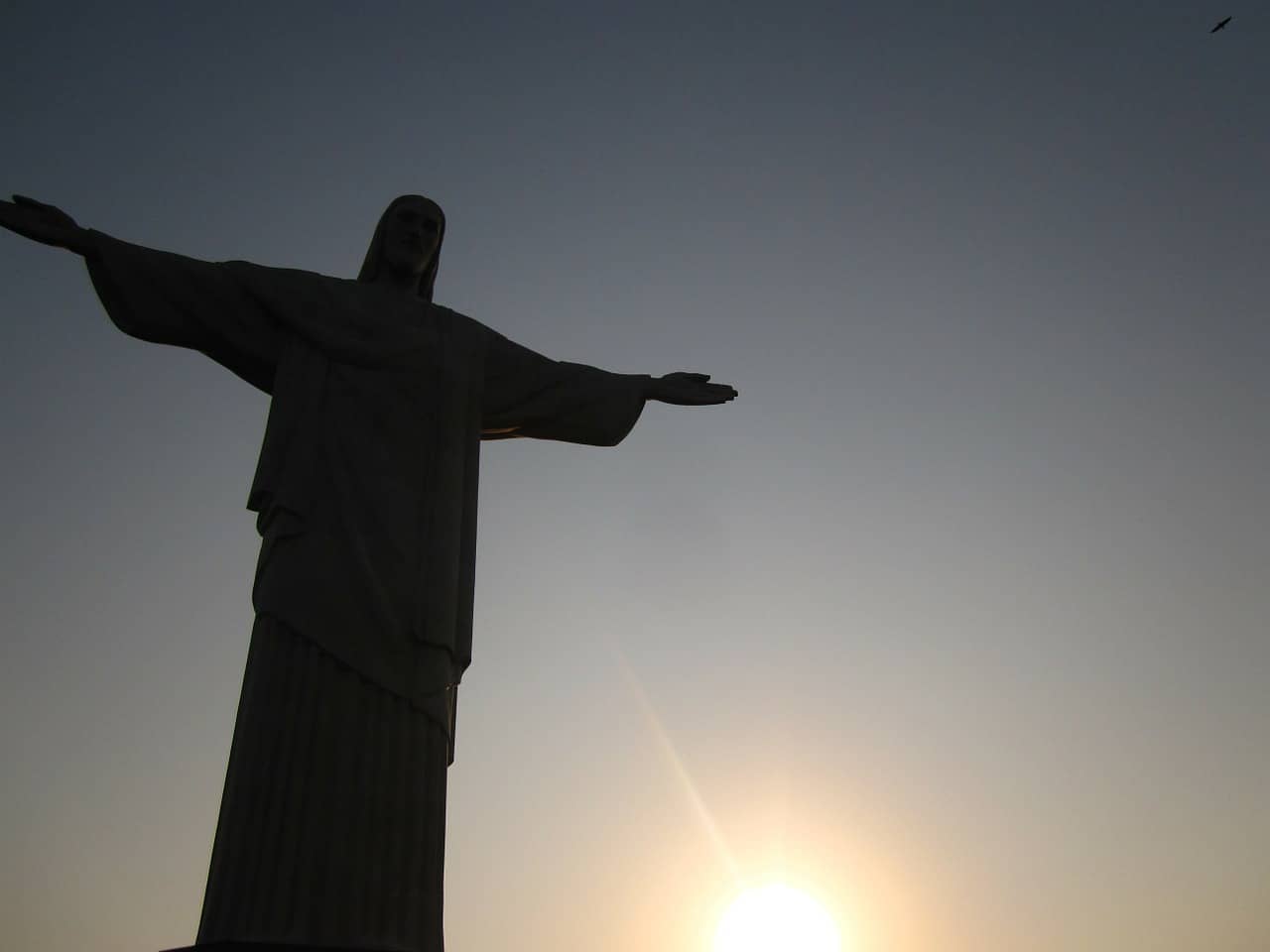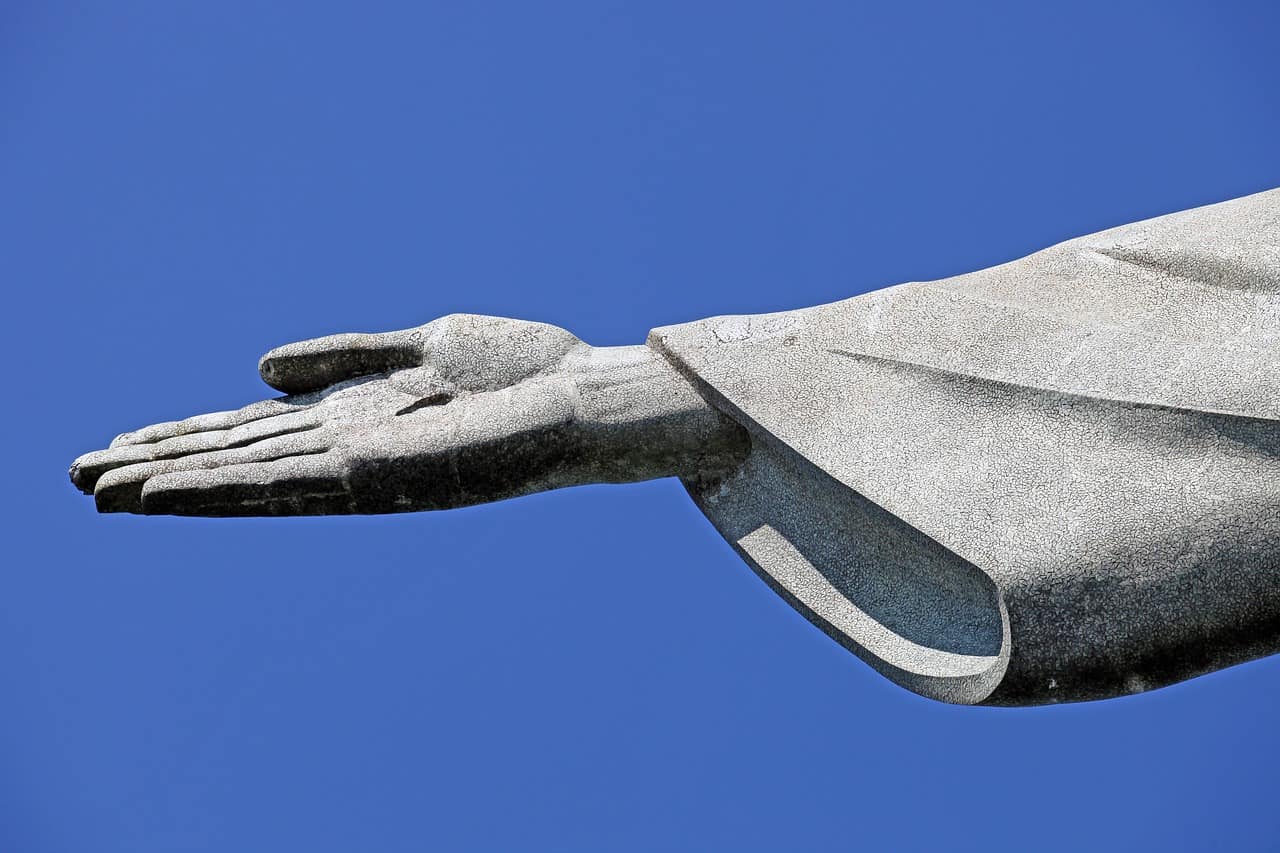
Brazil’s Christ the Redeemer made history as one of the largest icons of Christianity. Learn what makes up this statue – from the materials used, to the minds behind it. Deconstruct the iconic statue with these Christ the Redeemer facts.
- French sculptor Paul Landowski sketched the statue.
- Christ the Redeemer was completed in 1931.
- In total, the statue stands at 124 ft.
- The arms of Christ the Redeemer spans 92 ft wide.
- The statue is part of the New 7 Wonders of the World.
- Several civil engineers and sculptors helped build the statue such as Heitor da Silva Costa, Albert Caquot, and Gheorghe Leonida.
- If the U.S. has the ‘Statue of Liberty’, Brazil has the ‘Christ the Redeemer.
- Christ the Redeemer is located in Rio de Janeiro, Brazil.
- Christ the Redeemer is an Art Deco statue of Jesus Christ.
- Art Deco is a style of architecture that first appeared in France before the WWI.
- It took 9 years to build the Christ the Redeemer statue.
- Christ the Redeemer stands at 98 ft tall.
- The statue is on top of a 26 feet pedestal.
- Christ the Redeemer weighs approximately 700 tonnes.
- Christ the Redeemer overlooks the city of Rio de Janeiro.
- Christ the Redeemer is made of reinforced concrete and soapstone.
- Christ the Redeemer is a cultural icon of Brazil.
- The Vicentian priest Pedro Maria Boss first suggested that the statue should be placed at Mount Corcovado but it was rejected in the 1850s.
- Finally, when the Catholic Circle of Rio made a second proposal for at Mount Corcovado as its landmark in the 1920s, it was approved.
- Adventure enthusiasts can reach the peak of Mount Corcovado by a narrow road that passes through the forest of the Tijuca National Park.
Christ The Redeemer Facts Infographics

The Corcovado Rack Railway is the easiest way to reach Christ the Redeemer.
For tourists and visitors who do not like mountain trekking, they can opt for the railroad known as Corcovado Rack Railway. The Corcovado Train is a rack railway in Rio de Janeiro, that starts in Cosme Velho and ends at the summit of Corcovado Mountain at an altitude of 710 m.

The first visitors came to the statue on Oct 12, 1931.
Christ the Redeemer welcomed its first visitors on Oct 12, 1931. It was also the official date of its inauguration under the administration of the Provisional Government, Getúlio Vargas, and Cardinal Dom Sebastião Leme. Both of them delivered consecration speeches to mark this day.
It cost $250,000 to build Christ the Redeemer.
When it was constructed in the 1900s, the cost to build estimated at $250,000. In today’s money, that cost is equivalent to $4,000,000. How’s that for Christ the Redeemer facts?
The statue was struck by strong lightning twice already.
In 2008 and 2014, a strong lightning strike hit the head and fingers of the statue Fortunately, because of its reinforced concrete and soapstone, it endured the intense electricity. On average, lightning strikes the statue between 3-5 times a year. Definitely one of the more shocking Christ the Redeemer facts.
There are elevators and escalators on Christ the Redeemer.
The construction of elevators and escalators took place in 2002 to make it more convenient for tourists and visitors. Before, tourists had to walk 200 steps to reach the base of the statue, Thankfully, the escalators and elevators were functional by 2003.
Lee Thompson is the first person to take a selfie on top of the head of the statue.
With permission from authorities, a blogger named Lee Thompson of a UK-based travel company conquered his fears to take one of the most iconic selfies. Lee Thompson is the first person to take a selfie on top of the head of the statue.
Christ the Redeemer attracts close to 2 million tourists every year.
As part of the New 7 Wonders of the World, Christ the Redeemer gets approximately 2 million national and international visitors every year. The entrance fee to Christ the Redeemer statue in Rio de Janeiro costs around $25 per person.

Christ the Redeemer can withstand strong and heavy winds.
Since the statue sits atop a mountain, it is designed to resist strong winds and bad weather conditions. In detail, it can withstand wind speeds of up to 250 kilometers per hour.
Most of the materials of the statue are from Brazil.
The materials for building the statue were mostly sourced from Brazil. However, the material for its head and hands came from France and was only transported to Rio de Janeiro. The head of Christ the Redeemer alone weighs around 30 tonnes.

In the year 2010, Brazilians illuminated Christ the Redeemer with green and yellow lights.
According to the locals, it is best to visit the statue at night time because it will present a glowing view of the city. 300 energy-efficient LED lights lits the statue every night, making it visible from long distances.
Known as die-hard soccer fans, the Brazilians illuminated Christ the Redeemer with green and yellow light as their support to the game, which symbolizes the colors of the Brazilian soccer team. Now that’s one of the Christ the Redeemer facts you’d want to see for yourself.
Was this page helpful?
Our commitment to delivering trustworthy and engaging content is at the heart of what we do. Each fact on our site is contributed by real users like you, bringing a wealth of diverse insights and information. To ensure the highest standards of accuracy and reliability, our dedicated editors meticulously review each submission. This process guarantees that the facts we share are not only fascinating but also credible. Trust in our commitment to quality and authenticity as you explore and learn with us.
